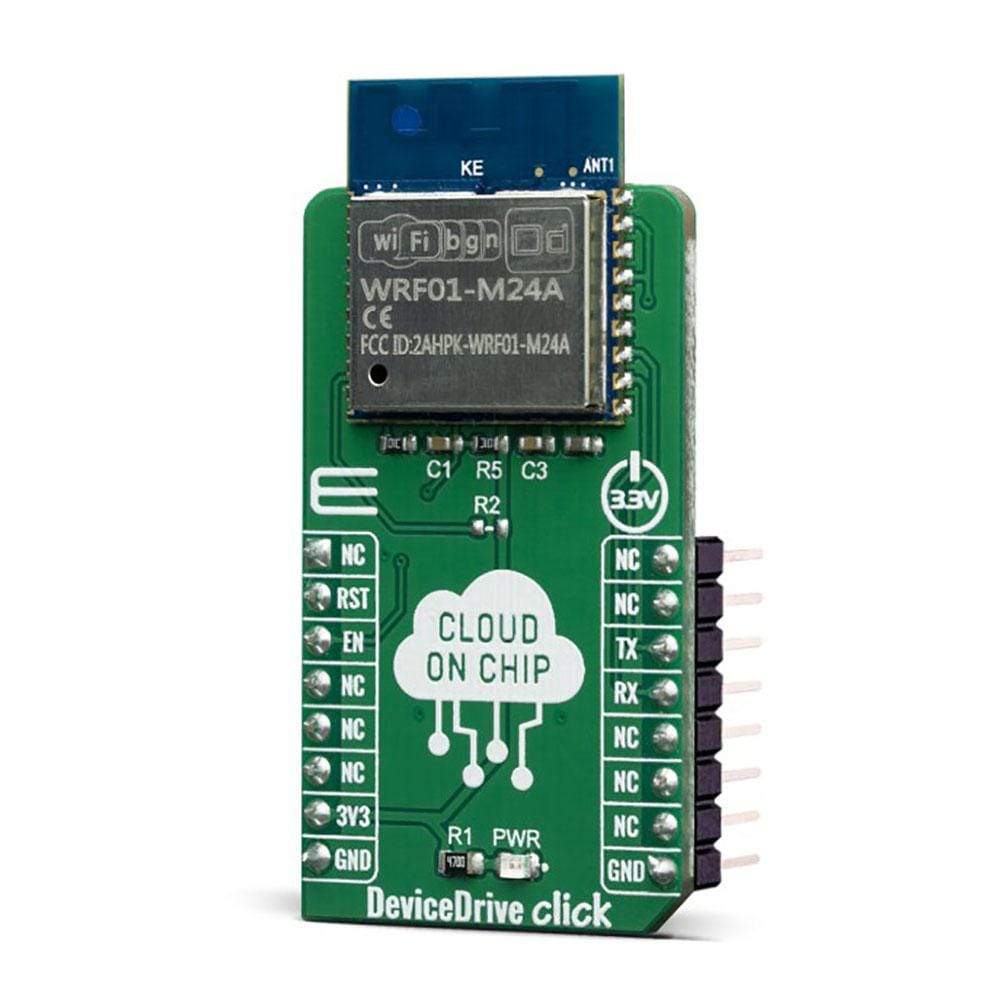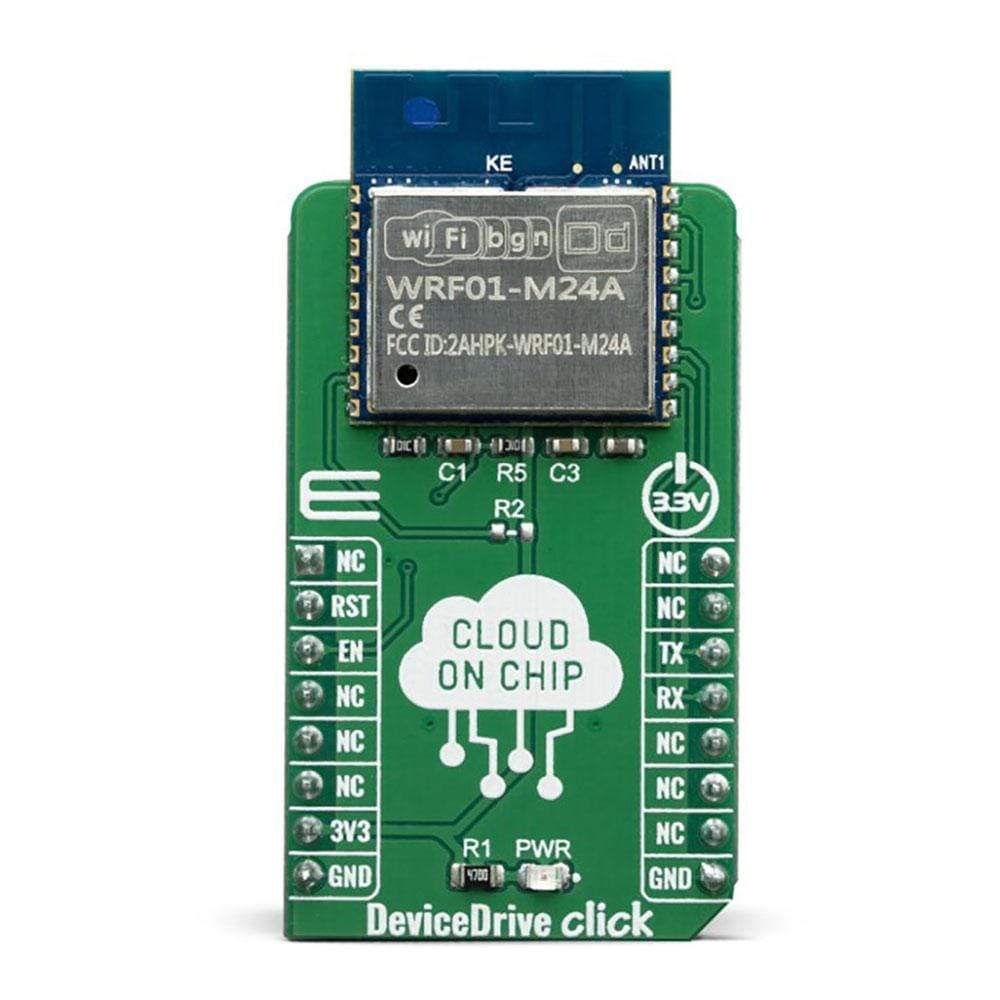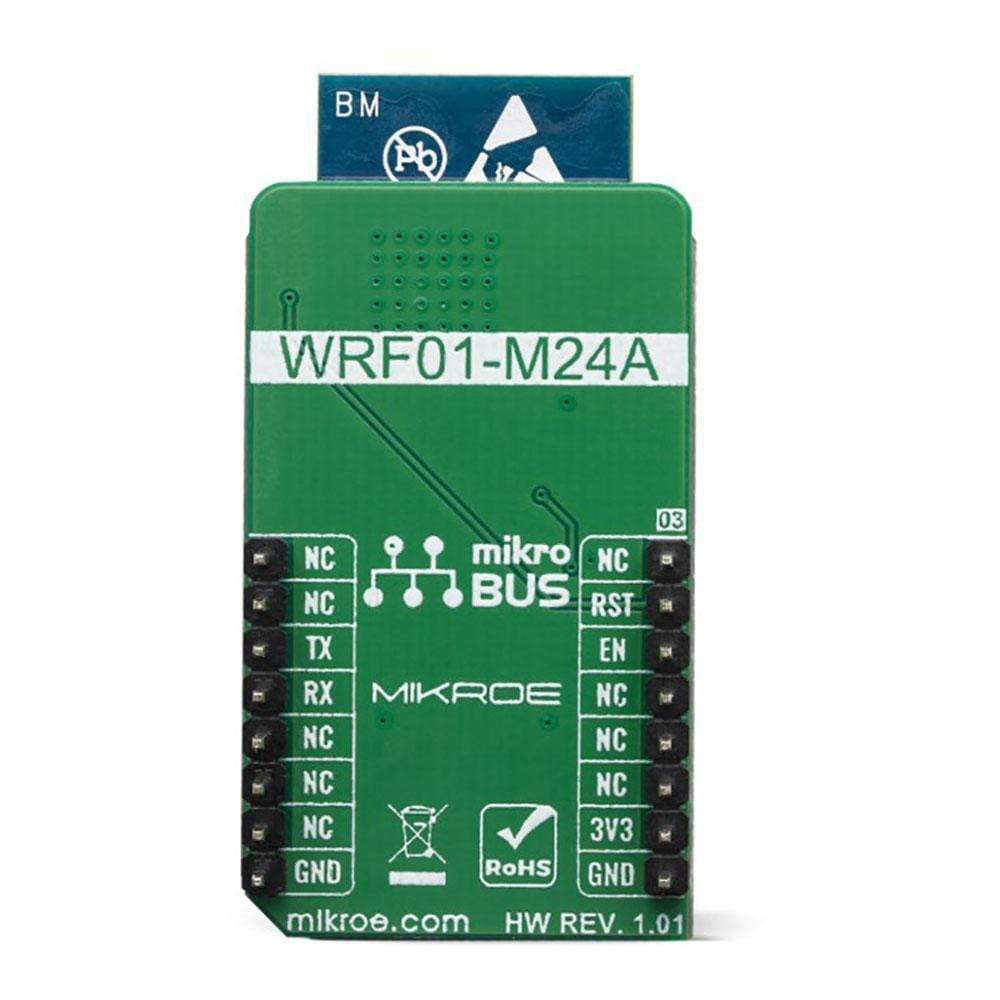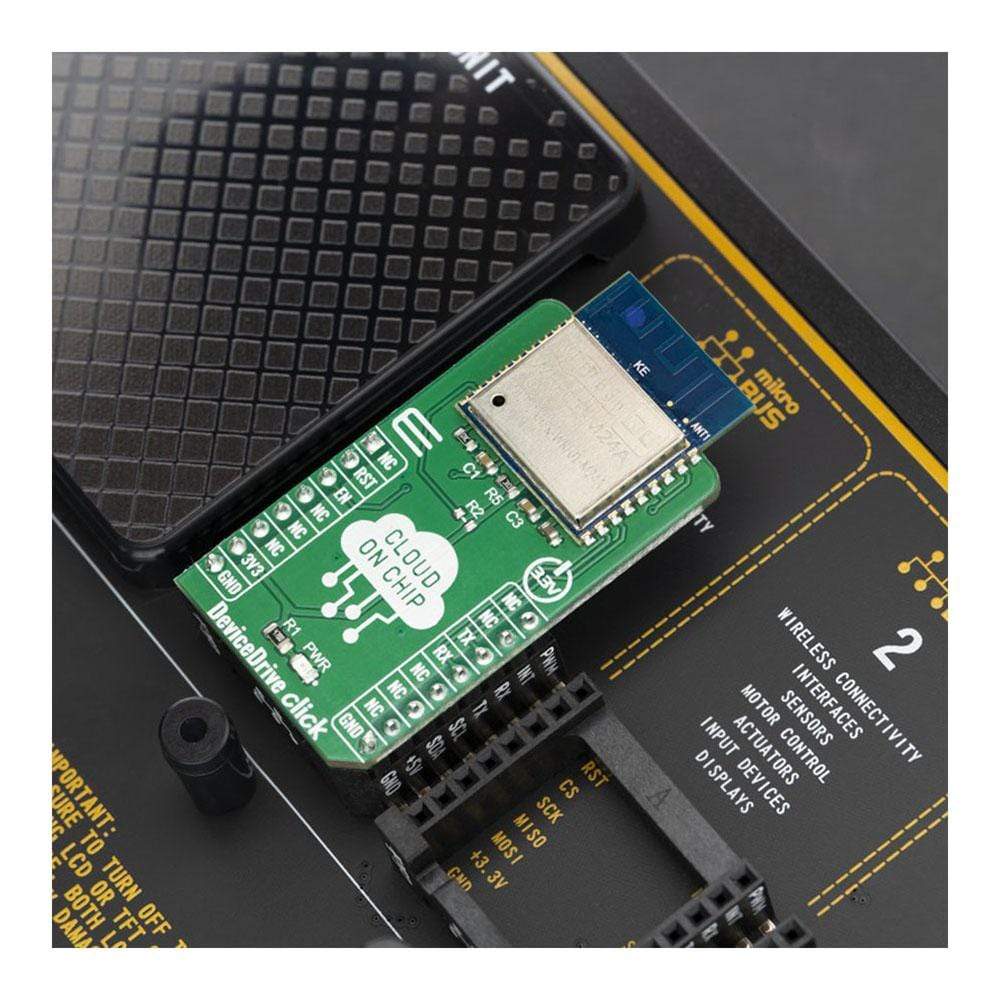



Key Features
Overview
The DeviceDrive Click Board™ is a complete Cloud-on-Module solution with Wi-Fi functionality and an integrated PCB antenna. The onboard WRF01-M24A module comes preloaded with DeviceDrive firmware which completely offloads Wi-Fi networking functionality from the application processor and enables features like OTA upgrade, automatic connection to the DeviceDrive Cloud and Mobile App. Each DeviceDrive Click Board™ board is coming with the FREE activation for your complete development and test of your application.
The WRF01-M24A module uses the UART interface (with JSON command format) for communication with external devices. With this board, you are getting FREE of charge access to the Mobile App, Cloud IoT-Hub, and WRF01 Firmware for testing your idea.
Downloads
La carte DeviceDrive Click Board™ est une solution Cloud-on-Module complète avec fonctionnalité Wi-Fi et antenne PCB intégrée. Le module embarqué WRF01-M24A est livré préchargé avec le micrologiciel DeviceDrive qui décharge complètement la fonctionnalité de réseau Wi-Fi du processeur d'application et permet des fonctionnalités telles que la mise à niveau OTA, la connexion automatique au Cloud DeviceDrive et à l'application mobile. Chaque carte DeviceDrive Click Board™ est livrée avec l'activation GRATUITE pour le développement et le test complets de votre application.
Le module WRF01-M24A utilise l'interface UART (avec le format de commande JSON) pour la communication avec des périphériques externes. Avec cette carte, vous bénéficiez d'un accès GRATUIT à l'application mobile, au Cloud IoT-Hub et au micrologiciel WRF01 pour tester votre idée.
| General Information | |
|---|---|
Part Number (SKU) |
MIKROE-3663
|
Manufacturer |
|
| Physical and Mechanical | |
Weight |
0.019 kg
|
| Other | |
Country of Origin |
|
HS Code Customs Tariff code
|
|
EAN |
8606018716463
|
Warranty |
|
Frequently Asked Questions
Have a Question?
Be the first to ask a question about this.




